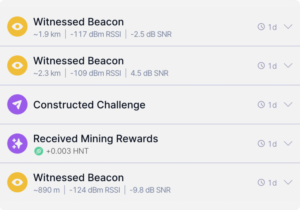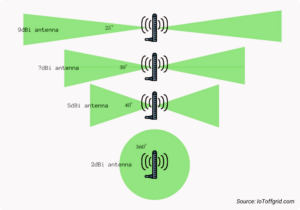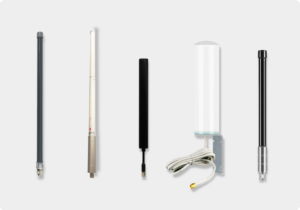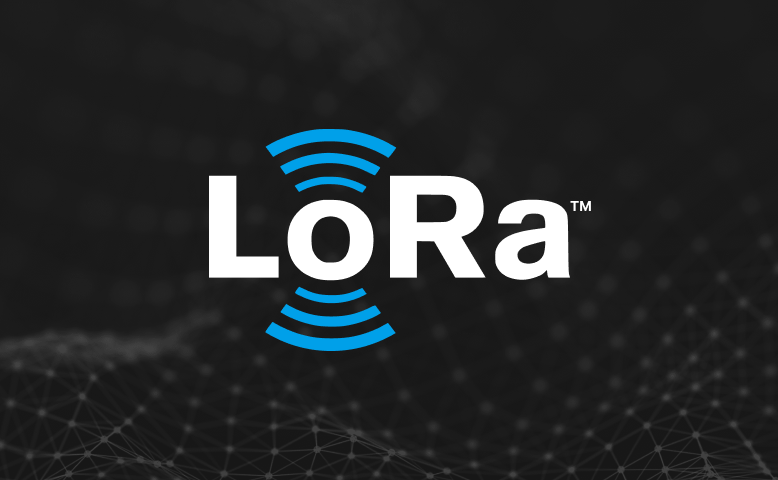Written by Nik Hawks (a.k.a. Gristle King)

Is upgrading your antenna worth it? The short answer is “probably”. The longer answer involves diving in to how Helium works, how an antenna works, and why buying an aftermarket antenna may help you earn more HNT. Let’s do this!
How Antennas Affect HNT Earnings
 The HNT your Hotspot earns is mostly a function of how many other Hotspots it Witnesses on a regular basis. Witnessing comprises about 75% of a Hotspot’s earnings. Beaconing is about 20%, and constructing a Challenge accounts for the last 5%. So, if you earn the majority of your HNT for Witnessing, how does that help you decide what antenna to get? You might think, as many have, that just getting the “biggest” antenna in terms of highest gain is the best choice. It’s not. As a matter of fact, when it comes to antennas, the single most important thing you can do has nothing to do with what antenna you get, it’s where you place it. In that case, higher is almost always better. Remember, what you’re aiming for is the maximum number of clear Lines of Sight to other Hotspots at varying distances out to 30 km. That’s what drives earnings. Still, you want to know if that fancy antenna you’ve been eyeing is worth upgrading to, right?
The HNT your Hotspot earns is mostly a function of how many other Hotspots it Witnesses on a regular basis. Witnessing comprises about 75% of a Hotspot’s earnings. Beaconing is about 20%, and constructing a Challenge accounts for the last 5%. So, if you earn the majority of your HNT for Witnessing, how does that help you decide what antenna to get? You might think, as many have, that just getting the “biggest” antenna in terms of highest gain is the best choice. It’s not. As a matter of fact, when it comes to antennas, the single most important thing you can do has nothing to do with what antenna you get, it’s where you place it. In that case, higher is almost always better. Remember, what you’re aiming for is the maximum number of clear Lines of Sight to other Hotspots at varying distances out to 30 km. That’s what drives earnings. Still, you want to know if that fancy antenna you’ve been eyeing is worth upgrading to, right?
 Let’s start with how antennas work. Through the precise placement of metal elements, an antenna transmits and receives a radio signal in a certain pattern. In very general terms, think of that pattern as a bubble around the antenna that can be shaped in many different ways. The AREA of the bubble won’t change, but the shape of it can change dramatically. High gain antennas will squish that bubble down to be very flat and long reaching. Low gain antennas will allow the bubble to remain more like a sphere. If you need to, imagine a balloon that represents the coverage. If you squish a balloon from the top and the bottom, it bulges out at the sides. If you just leave it alone, it has a round shape. Yes, it’s that simple.
Let’s start with how antennas work. Through the precise placement of metal elements, an antenna transmits and receives a radio signal in a certain pattern. In very general terms, think of that pattern as a bubble around the antenna that can be shaped in many different ways. The AREA of the bubble won’t change, but the shape of it can change dramatically. High gain antennas will squish that bubble down to be very flat and long reaching. Low gain antennas will allow the bubble to remain more like a sphere. If you need to, imagine a balloon that represents the coverage. If you squish a balloon from the top and the bottom, it bulges out at the sides. If you just leave it alone, it has a round shape. Yes, it’s that simple.
Low Gain or High Gain?
It’s also a bit tricky, as the actual useful difference in range (how far it can transmit or receive) between a high gain and a low gain antenna in the world of Helium is basically nothing. Yes, you read that right. In the world of Helium, which uses LoRa (Long Range, a robust radio protocol designed to transmit small packets of data long distances) there is no significant change in the distance your signal can travel as far as earning HNT. As a real-world reassurance, I have a 3 dBi antenna that routinely Witnesses other Hotspots out to 100km away, and occasionally 200km. Now, those aren’t reliable, but they do happen regularly. Most of the earnings on that Hotspot, as with almost all Hotspots, come from Beacon/Witness events within 10 km. For the purposes of this article, the pattern that a Hotspot both transmits to and receives from is identical.
 So, why would you choose a high gain antenna? If you’re putting your antenna outside and up high, with no obstacles around it (trees or other buildings blocking the signal) there is no good reason to use a high gain antenna. If, however, you’re putting your antenna inside, where it has to punch out through walls or the roof, or you have known obstacles surrounding you (like trees or buildings), then a higher gain antenna can help provide enough power to get past those. Anything beyond 9 dBi in most regions is overkill. You can certainly go higher if you like, and you’ll find a few very vocal people who will swear by it, but having seen and consulted on a few thousand deployments, my experience has been that high gain antennas don’t usually move the needle in meaningful ways.
So, why would you choose a high gain antenna? If you’re putting your antenna outside and up high, with no obstacles around it (trees or other buildings blocking the signal) there is no good reason to use a high gain antenna. If, however, you’re putting your antenna inside, where it has to punch out through walls or the roof, or you have known obstacles surrounding you (like trees or buildings), then a higher gain antenna can help provide enough power to get past those. Anything beyond 9 dBi in most regions is overkill. You can certainly go higher if you like, and you’ll find a few very vocal people who will swear by it, but having seen and consulted on a few thousand deployments, my experience has been that high gain antennas don’t usually move the needle in meaningful ways.
The stock antenna that comes with most Hotspots is low gain. They’re fine for low-mid earning Hotspots indoors where the effort you can or want to put in is low. If, however, you want to improve your earning power, you’ll need to either get the antenna outside (most of the stock antennas are NOT outdoor rated) or buy an aftermarket antenna. Now, the funny thing about all this is not that the aftermarket antenna will automatically earn you more; there’s no guarantee there. It’s that having an aftermarket antenna allows and encourages you to improve the thing that actually matters, which is antenna placement. Where you place your antenna is far more important than what antenna you have. Get the thing up high, outside, with at least 10-20’ of clear space in all directions and you’ll be earning 90-95% of the HNT you could possibly earn.
To Upgrade or Not to Upgrade
 Still, you want to know: Is it worth it to upgrade? Let’s do the numbers. The average well done upgrade will run $3-400. You can certainly do it cheaper, but if you pencil in that amount then you’ll have plenty of budget to do a great job with all new equipment. Just getting the thing outside and up high will usually increase earnings by 10-40%. Sometimes more, but I wouldn’t count on that. Which antenna you choose doesn’t really matter, unless you have the challenges I talked about above (indoors or other known obstructions.) From here, take your predicted earnings, multiply that by 10-40%, and see how quickly your antenna investment might pay off. Again, it’s not a guarantee, but that’s a reasonable method to estimate whether or not you should upgrade your antenna.
Still, you want to know: Is it worth it to upgrade? Let’s do the numbers. The average well done upgrade will run $3-400. You can certainly do it cheaper, but if you pencil in that amount then you’ll have plenty of budget to do a great job with all new equipment. Just getting the thing outside and up high will usually increase earnings by 10-40%. Sometimes more, but I wouldn’t count on that. Which antenna you choose doesn’t really matter, unless you have the challenges I talked about above (indoors or other known obstructions.) From here, take your predicted earnings, multiply that by 10-40%, and see how quickly your antenna investment might pay off. Again, it’s not a guarantee, but that’s a reasonable method to estimate whether or not you should upgrade your antenna.
I’ll leave you with how I think about antennas. I would NEVER use the stock antenna and expect to be maxing out the earnings of a location. I will ALWAYS get my antennas up as high as possible in places that have great views of lots of other Helium Hotspot antennas. I typically use the most expensive low gain antennas out there, but that’s just because I like nice things. I don’t think the actual antenna makes an enormous difference. The single biggest improvement you’ll get from upgrading to an aftermarket antenna is the ability to place it in an optimal location. THAT is what moves the needle.
Here’s to your Helium success, now get that antenna outside and up as high as possible!
Resources:
- The most expensive low gain: HNTenna [https://hntenna.com/?sca_ref=1601042.z4n2RipOsO]
- An excellent range of antennas: McGill antennas [https://www.mcgillmicrowave.com/helium-products/helium-antennas-helium-products/omni-directional-tuned-optimised/?wpam_id=12]
- Where to get antenna cable: McGill [https://www.mcgillmicrowave.com/helium-products/helium-lmr-cable-assemblies/lmr-400-cable-assemblies/?wpam_id=12]



